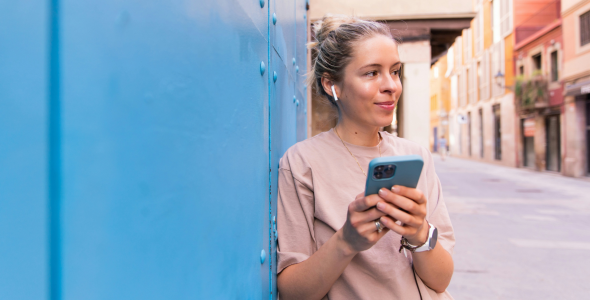Your experience map: how to create it and why you need it
An experience map is a UX design tool that provides unique insight into the end-to-end user journey. It provides crucial emotional context for brands looking to understand how to eliminate friction and deliver better experiences. Here I explore why more and more brands are embracing experience maps and why it’s paying off.
What is a user experience map?
Experience mapping is user experience (UX) method that visualises the typical end-to-end experience a user has when trying to complete a particular goal or task.
The output of this process is an experience map that helps you understand how your users are thinking, feeling, and behaving at key moments across the user journey.
Your experience map provides a great way to understand the emotional context of your users and the emotional triggers that influence whether they have a positive or negative experience with your digital product or digital prototype.
Where does an experience map happen?
Experience maps are a valuable tool for helping brands understand the engagement a customer has with their digital product or service. They can map customers’ behaviours and motivators before, during, and after the online experience.
This level of understanding can help us create digital products that demonstrate empathy by taking into account how a user enters a site, what drives them to use it, and how to support them afterwards in a way that nurtures loyalty and increases the life and use of the product.
Experience maps can be used at any point during the digital product lifecycle, but they’re perhaps most insightful at the digital prototyping stage.
Why? Because they can help identify potential friction points and engagement opportunities from the outset, informing digital product development.
Using an experience map early on in the UX design process is beneficial for identifying strategic opportunities and rapidly generating ideas. It’s a useful exercise for engaging and aligning the team early on, promoting creativity, and ensuring customer-centricity from the start.
An experience map is most effective when used in combination with Discovery or investigation methodologies designed to ensure the development of digital products that meet your users’ needs and behaviours such as ‘Future Backwards’, service blueprint diagrams, and impact mapping.
- Future Backwards is a simple process of plotting future ‘heaven’ or ‘hell’ scenarios for your business or product. Through careful facilitation you’re able to plan the journey that will progress you towards the desired outcome.
- Service blueprint diagrams produce a much more in-depth map of the entire workings of any service-based business and can accurately map what a user sees and interacts with (front stage) and what’s driving this behind the scenes (backstage) during the entire lifecycle of a user journey. An extensive piece of work when complete, a service blueprint diagram becomes a living document where you’re able to measure any change in your business and can futureproof for any knock-on effect the smallest service alteration can have.
- Impact mapping is a great tool that enables you to quickly work out who or what will impact the success of your digital initiative and, with a bit more analysis, how you as a business can drive out positive impacts and avoid or remedy the negative influences.
All of these methods can help you make sense of the way users engage with your product, but experience mapping can offer a unique insight into the lifecycle of a user’s personal requirements and identify opportunities to immediately visualise ideas and help all stakeholders focus on possible outcomes from the outset.
How do you create an experience map?
Experience mapping begins with a simple process of empathy mapping called ‘Doing, thinking, feeling’. Let’s start off with an exercise.
Think of a general situation you were in today. It can be as generic as going to work.
Now, break it down to a specific point within that journey (for example, your train journey) and write down simply:
- What you were doing at that time
- What you were thinking at that time
- What you were feeling at that time
You now have a map illustrating a defined moment within a user journey (your commute) from which you can start to see opportunities for improving that element of the user journey.
This map breaks down that defined moment into your physical situation (what you’re doing), insight into next steps (what you’re thinking), and more importantly your mood (what you’re feeling).
This is the premise of empathy mapping and the last aspect (what the user is feeling) is key for brands to understand since decisions made with a high emotional engagement can make or break a user journey.
You’ve just completed the initial stage of your experience map. So let’s now take this process and apply it to a business case.
Say we have identified through Google Analytics that a shopping basket has a dramatically high abandonment rate. By breaking down what the user is doing, thinking, and feeling as they add an item to the basket and progress into checkout we can isolate the pain points and begin to identify the opportunities that we can exploit.
Whatever the project I always recommend conducting thorough user research upfront mainly through user interviews and beginning to get a picture of accurate journeys that users undertake.
These results will feed directly into your ‘Doing, thinking, feeling’ so that any solution you and your team design will be targeted at the opportunities you have unearthed.
Providing that the user research feeding into your ‘Doing, thinking and feeling’ exercise is thorough, any solution you and your team design will be targeted at the opportunities you have unearthed.
This is always the fun part of the process; the energy is flowing as ideas are brought to life. Use this time to encourage creative freedom, and, once you have a series of compelling ideas, select a couple that can be worked on visually.
These doesn’t have to be done by a professional illustrator but a few hours building up a detailed, presentable sketch can capture the creative energy.
An experience map example
The first project my team undertook using this process really helped us learn what to build for an independent nursing agency.
Our client specialised in recruitment and placements. They recognised that they were well behind the digital curve but were unsure where to start.
So where did we begin? We looked at the organisation’s KPIs and business goals because, regardless of what we advise, design, and create, we have to ensure we’re aligned with the strategic goals.
We knew our client had no trouble attracting users, but getting them through a protracted interview process and completing shifts appeared to be one of the biggest bottlenecks in their business.
To understand why the users were failing at these stages we had to undergo some basic user research. So we ran a series of user interviews and plotted their entire journey from hearing about this recruitment company to completing their first shift. This created a detailed picture of what barriers the user had to overcome and where the service could be improved.
The process was divided into four stages with each stage containing several sub categories that filled in our timeline:
- Joining: Consideration / Application / Pre-screening / Interview / Success
- Pre shift: Planning / Pre-travel / Travel
- During shift: Work / Departure
- Post shift: Log / Discuss / Payment / Booking next shift
At each sub category we probed deeper and asked the interviewees what they were ‘doing, thinking and feeling’ to begin to map the opportunities within their experiences where we could genuinely make a difference.
By looking at the emotional challenges they faced we could see where their enthusiasm would wane, why their patience got exhausted, and when doubt would creep in. This insight meant we could spot areas of opportunity and remedy users’ sense of vulnerability before it surfaced.
Use your experience map to find improvement opportunities
Opportunities are wonderful. They tell what life can be like whilst at the same time reflecting on current weaknesses in a non-critical way. Opportunities became our buzzword and we created 72 of them, with a typical example is below:
A tips and tricks sheet specific to the site where you’re working. Info from our network, from your fellow temps, gives you the key info to get ahead of the game and take the worry away from new locations and ways of working.
Once we had 72 of these ideas we illustrated a handful of them and presented our entire experience map in a huge printed timeline to bring to life our design direction and present our work in a compellingly tangible way.
The visual nature of our experience map meant that we could spot themes and behaviours where ideas and opportunities would overlap and complement each other.
We began to connect these with specific moments within the user journey, giving us great insight as to where we would could have the most immediate impact.
Now, Soon, Later, Bin
As we walked through our workshop we were able get feedback from the client as to which ideas they would like to work on – now, soon, or later – and which ones to bin.
Using these exact expressions is key as it maintains momentum and energy. Nothing is off the table unless it’s binned which is decisive enough to allow for focus on the approved ideas.
Once we had completed the workshop we had an outstanding collection of three opportunities that our client wanted to start with. Naturally we couldn’t start them all at the same time so with a small assumptions mapping session, assessing the level of known effort versus the potential to deliver impact against the business goals, we were able to whittle it down to three overlapping ideas.
From this we created a backlog of digital initiatives focused on driving value back to the business. From this point we could begin in earnest with our wireframes and designs, in complete confidence and with a highly enthusiastic team.
Don’t be afraid to change your path
Despite the depth and detail of this process, there will always be times where you’re unsure whether you’re on the right path. And a huge takeaway from this project is that you shouldn’t be afraid to change path.
You will learn so much about your users and can use this process to identify the improvements that will drive maximum ROI.
But it’s crucial to remember that an experience map is not a static document. Like personas, they can grow out of date or inaccurate.
Revisit your map regularly to see if any of the ideas can be elaborated or tweaked to greater effect than the one you are currently working on. And, if that’s the case, discuss it with the team, because they will only ever thank you for the insight and ideas you offer.
And most important of all: have some fun!





